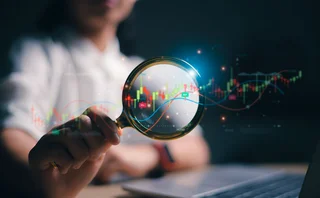
Learning algos that learn how to learn
Knowing what to remember and what to forget could help machines beat quant and discretionary investors
Brexit, trade wars, correlations coming undone, fractious geopolitics – if ever there was a moment for discretionary trading, this is it. Or so the argument goes.
Conventional quant models struggle when market forces have few or no parallels in the past. Discretionary traders, however, claim they are far less vulnerable to those big shifts – it is a key part of their pitch.
But discretionary traders have blind spots, too – they tend to assume the past will repeat itself, or they hang on to failing bets for too long.
Could intelligent machines do better than this when the markets’ laws are in flux? Some think they could.
Quants already toggle between models or adjust the way those models work in response to new elements in the market, pinpointed by machine learning algorithms.
Certain investment firms use learning algorithms to decide, for example, how to weight models that are more reactive to recent market history versus those that are less so, depending on how markets are moving.
Using machine learning to spot sharp changes in the market landscape that could trip up quant systems is also a hot area of research.
Talk to those investigating the idea and they are unequivocal on the power of algorithms to beat humans in spotting all kinds of jumps to the next market topography. One analyst experimenting with machine learning describes as “jaw-dropping” his model’s ability to predict recessions in backtests. Another, using machine learning to pinpoint the duration of past downturns, says the algorithms are far more accurate than traditional econometric models and show episodes of stress often pass more quickly or endure much longer than market professionals assume.
But some practitioners say machine learning can go even further in helping quant systems adapt with markets.
One idea is to build algorithms that ‘learn’ what worked in the past, but are selective on and how far back in time they look.
Such an approach dispenses with conventional models altogether, using a neural network to continuously learn from historical data how to trade in current markets. But the machine itself chooses the time window of data it learns from.
You can think of it as the algorithm deciding how much of the past to ‘forget’, just as a human trader might disregard history that no longer seems relevant.
A machine, though, can reliably adjust its certainty about the predictions it makes – until it learns the rules of the new world. The conviction of human traders, in contrast, can be distressingly out of sync with what is justified by the facts.
Practitioners speak only in general terms about these ideas. They are counting on future success to make their case for them, and don’t want to give away too many secrets. But their thinking is clear – machine learning will mould investment in ways different from both the quant and discretionary camps.
In other words, algorithms may soon learn for themselves how best they can learn for themselves.
Only users who have a paid subscription or are part of a corporate subscription are able to print or copy content.
To access these options, along with all other subscription benefits, please contact info@risk.net or view our subscription options here: http://subscriptions.risk.net/subscribe
You are currently unable to print this content. Please contact info@risk.net to find out more.
You are currently unable to copy this content. Please contact info@risk.net to find out more.
Copyright Infopro Digital Limited. All rights reserved.
As outlined in our terms and conditions, https://www.infopro-digital.com/terms-and-conditions/subscriptions/ (point 2.4), printing is limited to a single copy.
If you would like to purchase additional rights please email info@risk.net
Copyright Infopro Digital Limited. All rights reserved.
You may share this content using our article tools. As outlined in our terms and conditions, https://www.infopro-digital.com/terms-and-conditions/subscriptions/ (clause 2.4), an Authorised User may only make one copy of the materials for their own personal use. You must also comply with the restrictions in clause 2.5.
If you would like to purchase additional rights please email info@risk.net
More on Our take
Roll over, SRTs: Regulators fret over capital relief trades
Banks will have to balance the appeal of capital relief against the risk of a market shutdown
Thrown under the Omnibus: will GAR survive EU’s green rollback?
Green finance metric in limbo after suspension sees 90% of top EU banks forgo reporting
Has the Collins Amendment reached its endgame?
Scott Bessent wants to end the dual capital stack. How that would work in practice remains unclear
Talking Heads 2025: Who will buy Trump’s big, beautiful bonds?
Treasury issuance and hedge fund risks vex macro heavyweights
The AI explainability barrier is lowering
Improved and accessible tools can quickly make sense of complex models
Do BIS volumes soar past the trend?
FX market ADV has surged to $9.6 trillion in the latest triennial survey, but are these figures representative?
DFAST monoculture is its own test
Drop in frequency and scope of stress test disclosures makes it hard to monitor bank mimicry of Fed models
Lightening the RWA load in securitisations
Credit Agricole quants propose new method for achieving capital neutrality








